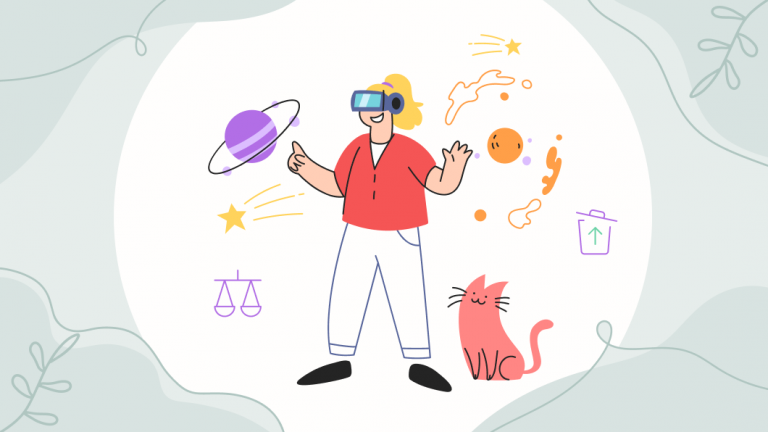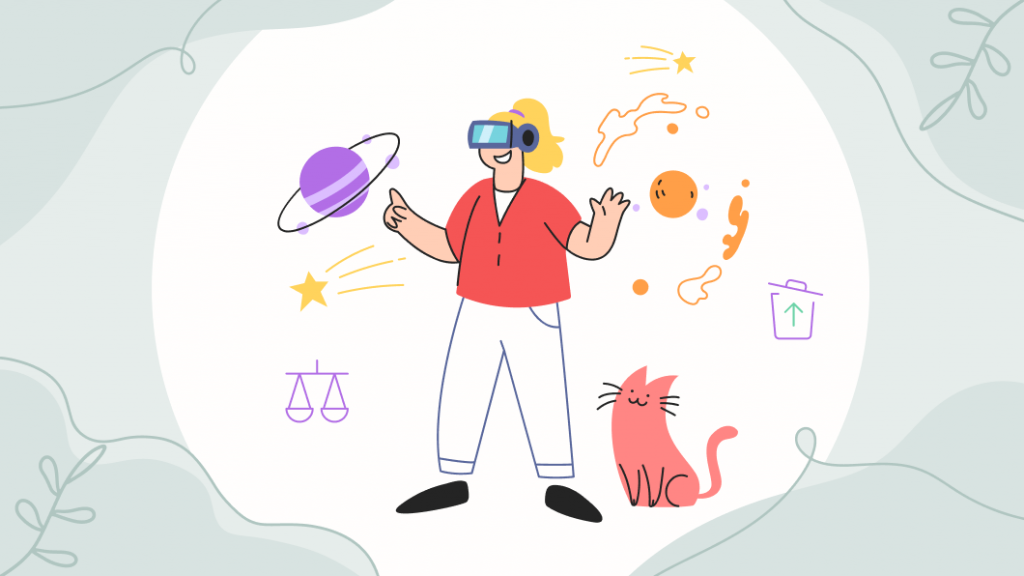A Strategy and an Antidote to Tech Addiction and Distraction From Life
Do you have a smartphone, use a laptop, have a tablet or wearable device? Then this one’s for you!
Let’s face it. Digital technology like the internet, smartphones, social media, laptops, tablets, email, wearables, streaming, has disrupted our way of living in just 20 years. With many upsides for sure, but at what cost?
Global depression rates have been climbing; there’s talk of tech addiction; we´re facing a stress pandemic and massive mental health challenges; increased loneliness; physical health issues; and much more with unbalanced tech use being a contributing factor according to research.
This piece gives you an introduction to tech-life balance, why you should consider changing habits, and how to start.
tech-life balance
[also tech/life balance] • noun
using technology in a way that doesn´t
have a negative effect on your personal
life or relationships
It all started at a playground in 2018. I was down crawling around at all fours with my kids when another child started crying loudly. As no-one reacted, I looked up at the other parents a few feet away, only to see what felt like a wall. What met my sight from the angle of a toddler, was the backside of a bunch of smartphones, with the parents all being too absorbed to notice the child.
As an engineer I have worked with technology my whole career, including digital tech, but there at the playground it struck me crystal clear that something is off. I saw first-hand how the technology that was supposed to help us is also hurting us in different ways, in this case coming between a parent-child relationship.
I felt a strong urge to make a change and make a positive impact, as I realized that many people are struggling with this. My first action was to start the non-profit Phone Free Day which enabled me to reach out to people across the globe, and understand what challenges people are facing.
Since then I have studied, conducted research, presented to schools, groups, and companies, written a book, run a podcast, still with the same underlying fuel: to make a splash in improving our time on this planet.
I am now thrilled and humbled to be writing my first contribution to the Kokoro community. My goal is not to tell you what is wrong or right, or what you should be doing. Ok maybe a little bit. But my first and foremost hope and wish is to make you reflect.
See, reflection is like fertilizing soil: it lays the foundation to growth, and is a platform where new ideas can root themselves, grow strong and transform us. So as you read this I encourage you to actively do the exercises, try out the habits, and look at yourself clearly – even though it may be uncomfortable!
Everyday, I see examples of how an unbalanced technology use is causing ill-effects to users. And maybe more noticeable, how the users keep using the technology in a way that is having these effects. So why do we keep scrolling away in bed even though we know we should go to sleep? Why do we answer that text message while driving? Why do we get stressed at work by all the emails and watch a YouTube video to relax? Why do groups of friends sit silently at dinner, all staring down at their devices? And why do parents push their child with one hand while clinging to the smartphone with the other?
Stating the facts – what’s the problem?
The answer to why we get so absorbed by digital tech lies in our nervous system and the neurotransmitter called dopamine. This substance, also called “the feelgood chemical” or the “reward chemical”, is made in the brain and gives us a feeling or pleasure and motivation when released. Dopamine has been vital for human evolution as it gets released to promote activities that increase our chance of survival, and makes us react to e.g. noises, colors, movement, and unexpected happenings. It can even be released in , and gives us a sense of satisfaction, pleasure, and motivation.
“Dopamine allows us to pay attention to the critical cues that will help meet our survival needs for food, shelter, and human relationships.”
– Harvard University 2021
I tend to think of the brain designed to release dopamine for a roaring lion on the savannah, or the search for colorful berries in the forest. In fact, our brains are pretty much the same as 30,000 years ago: we still react to the same triggers! And this is the core of why we get so hooked by digital tech. The devices and apps we have come to love and use for hours on end, are designed mimicking the dopamine mechanism in the brain to keep our attention.
Scrolling through feeds, or checking our email, keeps our brain wondering what will come next, and release dopamine in search of important information, and unexpected impressions; bright colors in apps stimulates us; comments and likes on social media taps in to our innate need of confirmation; notifications give us a dopamine rush and directs our attention.
“Never before in history have a handful of technology designers, working at three companies, influenced how a billion people think and feel every day with the choices they make.”
-Tristan Harris, former Google employee, co-founder of the Center for Humane Technology
This is part of what is called “the attention economy” where companies’ business models are no longer about selling products, think e.g. Nintendo in the 80s, but keeping and monetizing our attention. So don’t judge yourself for having a hard time putting the phone down!
It is not just the phone though. The digital technology that has taken us by storm due to these neural system-appealing characteristics include both hardware (e.g. laptops, smartphones, tablets, smartwatches and other wearables) and software (e.g. news apps, email, social media, games, streaming services like Netflix, search engines and more). And if you think of it, no one really taught us how to use this new tech that started being widely used in the late 2000s.
No one really discussed when and where it is appropriate to use smartphones, we were so mesmerized by the new innovation and possibilities. Since the first iPhone was released in 2007, there are now more phones than humans in the world (International Communication Union 2022), and much behavior has been normalized which was unthinkable just 10-15 years ago.
The effects of unbalanced technology use has been increasingly studied by researchers, and include a long list of potential downsides.I believe that it is important to be aware of all of this to understand why tech-life balance is actually a thing for all of us, and not just a critique of ‘teens spending too much time on social media’.
This is one way of looking at it that I find helpful:
- Mental health, e.g. stress, anxiety, sleep disturbances
- Physical health, e.g. eye tiredness, neck pain, thumb pain
- Relationships and social life, e.g. arguments, decreased quality of interactions
- Focus, e.g. decreased attention span, lowered productivity
- Family life and kids, e.g. child development, family interactions
- Financial life, e.g. overspending from ease of online shopping
- Human experience, e.g. decreased sense of presence and meaning, missing out on delightful moments
Starting the journey towards tech-life balance
After this somewhat gloomy depiction of our relationship with tech, let’s see how we can start finding that balance of using this amazing technology while minimizing the negative consequences.
In the following exercises you are invited to reflect on your own situation and set the foundation as we embark on this transformation journey together.
Exercise 1:
Look at the list above with potential effects, and reflect on which of these areas where you are experiencing challenges from your current tech use. Perhaps you have your own examples in these categories, or different categories all together.Write these down.
Don’t feel bad if you realize that you are experiencing some, or even many of the challenges. I have spoken to, and surveyed, thousands of people about this during the past years, and have yet to meet a person who does not experience any negative effects from digital tech.
Next, let’s dive deeper into everyday situations in your life.
Exercise 2:
Go through each of the statements below and consider whether this is happening to you.
I often lose track of time when engrossed in my devices.
I have a strong urge to check my device immediately upon receiving a notification.
I tend to use my devices even when I’m interacting with friends or family.
I find myself spending more time on social media than I’d prefer.
I often sacrifice sleep to stay engaged with my devices longer than planned.
I experience “FOMO” / anxiety about missing out if I don’t check my phone regularly.
I feel like I have to be constantly accessible, whether for work or personal matters.
Whenever I have a question, my instinct is to reach for my smartphone for an answer.
The sheer volume of emails stresses me out.
We have screen time conflicts with family members or friends.
For most of us, myself included, at least a few of the statements above are true, which indicates that our tech-life balance might be a bit off. The good side is that there’s room for improvement for mind, body and self, and unearthing more delightful moments in life!
Exercise 3:
Lastly, until we meet again in two months’ time, I encourage you to start noticing your own, and others’ behavior around tech. What do you react to when you pay attention? How is tech enhancing your life? How is it coming between you and what is really important for you?
Digital tech is here to stay, and learning to navigate and develop a healthy relationship with it is crucial for flourishing in life. In the coming months we will explore how to change habits, and what new habits we can build to address the challenges identified here.
I hope that you found this piece useful, that you have gained both new knowledge, and some new insights about yourself. I’d love to hear your thoughts, and if you have any stories to share about our life in this digital age. Feel free to reach out at [email protected]















